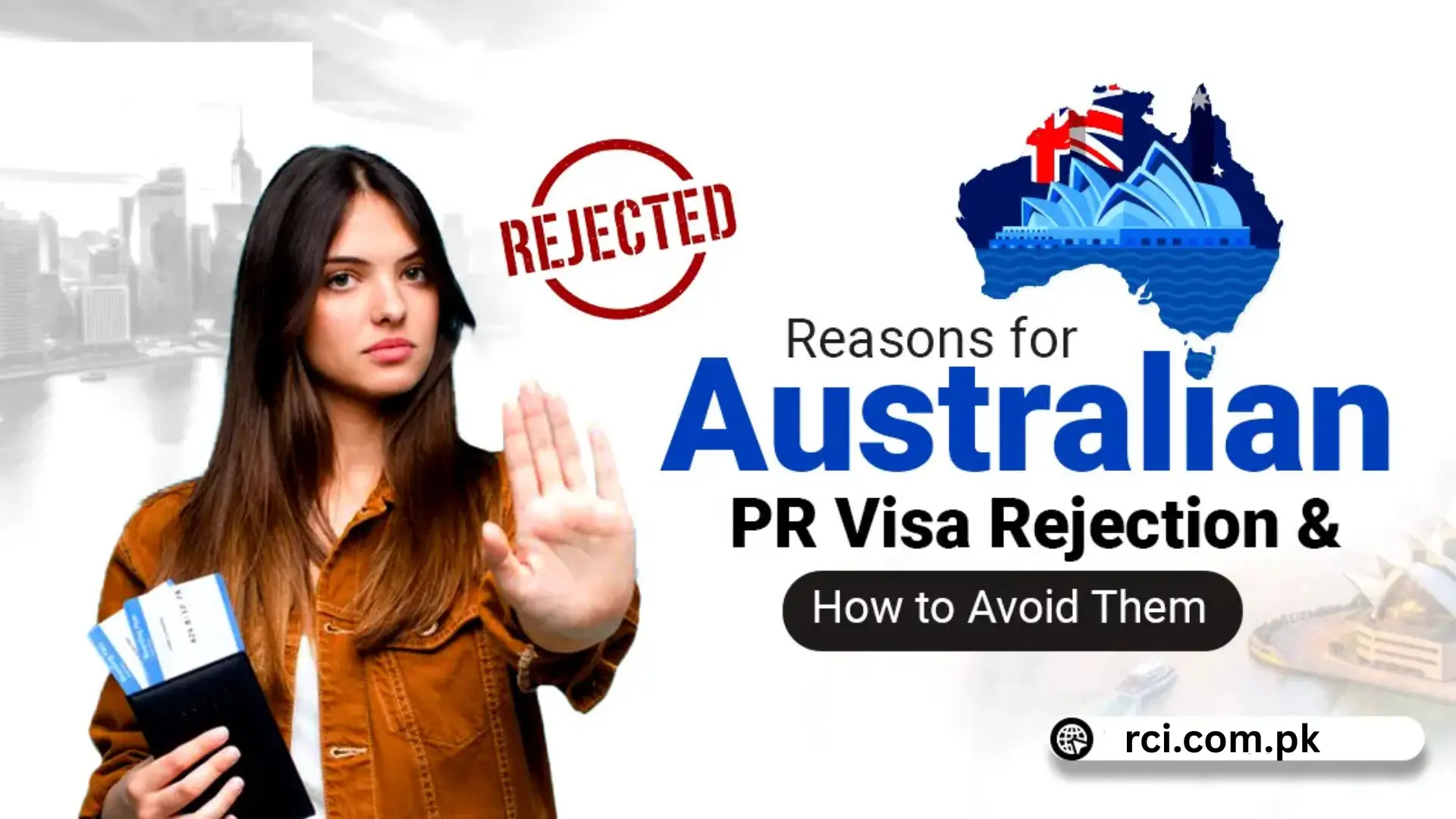Reasons for Australian PR Visa Rejection & How to Avoid Them. Applying for an Australian PR visa is an exciting step toward living and working permanently in Australia. However, receiving a PR visa rejection can be heartbreaking, especially after months of preparation and anticipation.
Understanding the common reasons for rejection and knowing how to avoid them is crucial to improve your chances of approval. Whether you’re applying as a skilled worker, dentist, pharmacist, or other professional, being aware of potential pitfalls can help you secure your permanent residency.
Common Reasons for Australian PR Visa Rejection
Many applicants face PR visa rejection due to avoidable mistakes. Knowing these reasons can help you plan your application better.
1. Incomplete or Incorrect Documentation
Submitting incomplete or inconsistent documents is one of the main causes of rejection. This includes:
- Incorrectly filled application forms
- Missing police clearance certificates
- Expired language test results such as IELTS or PTE
Tip: Double-check every document before submission to ensure accuracy and completeness.
2. Insufficient Points
Australia’s PR visa system (SkillSelect) operates on a points-based system. Failing to meet the minimum points requirement, usually 65 points, can lead to automatic rejection.
Tip: You may be able to claim additional points through:
- Partner skills
- State or territory nomination
- Professional year program
3. Unmet Health or Character Requirements
Applicants who do not meet health or character requirements are at risk of rejection. Serious medical conditions or criminal records often cause applications to be denied.
4. Incorrect Occupation Assessment
Choosing the wrong occupation from the Skilled Occupation List (SOL) or submitting incorrect skills assessment reports can result in rejection.
Tip: Always consult a registered migration agent to ensure your chosen occupation is correct and your assessment is valid.
5. Inadequate Work Experience
Claiming work experience that cannot be verified, or not meeting the minimum experience requirement, can weaken your application. Make sure your references and documents are genuine and verifiable.
6. Failure to Meet Visa Conditions
If you have breached previous visa conditions or overstayed in Australia, it can negatively affect your PR application. Honoring previous visa terms is essential.
7. Financial Insufficiency
Not proving sufficient funds for initial settlement in Australia can trigger rejection. Always maintain proper financial documentation.
8. Submitting False Information
Providing fraudulent documents or false claims can result in immediate rejection. This may also lead to a ban from applying in the future. Always be honest and transparent in your application.
How to Avoid Australian PR Visa Rejection
Avoiding rejection starts with careful planning, professional guidance, and understanding the expectations of the Department of Home Affairs.
1. Understand Visa Requirements Thoroughly
Each PR visa subclass has specific eligibility criteria. Ensure you meet:
- Age, education, and English proficiency requirements
- Health and character standards
- Minimum points threshold (for skilled visas)
Tip: Use the official SkillSelect points calculator to confirm your eligibility before applying.
2. Get a Valid Skills Assessment
Your occupation must be listed in the Skilled Occupation List, and you must obtain a positive skills assessment from the relevant authority. Make sure your qualifications and work experience align with your selected occupation.
3. Keep All Documents Accurate and Updated
Ensure all documents are current and verified, including:
- Work reference letters
- Language test results
- Police and medical clearances
Maintain a document checklist to avoid missing items.
4. Be Honest and Transparent
Never attempt to conceal information or submit false documents. Misrepresentation can lead to rejection and bans. Always provide accurate and truthful information.
5. Meet English Language Criteria
Even if you are a fluent speaker, failing to submit valid English test scores such as IELTS, PTE, or TOEFL can result in rejection. Aim for scores higher than the minimum to boost your points and strengthen your application.
6. Choose the Right Visa Subclass
Applying under the wrong category is a common mistake. Evaluate which subclass suits your profile best, such as subclass 189, 190 (state nominated), or 491 (regional). Selecting the right visa can significantly improve your chances.
Difference Between Revoked and Cancelled Visa
Although “visa cancellation” and “visa revocation” are often used interchangeably, they have distinct meanings.
Cancelled Visa (Common in Australia)
- Officially withdrawn after being granted.
- Issued by the Immigration Department or Minister.
- Reasons include breaching visa conditions, providing false information, or security concerns.
Revoked Visa (Common in the U.S. and some other countries)
- Previously approved visa declared invalid, often before use.
- Issued by the authority that granted the visa, e.g., U.S. Department of State.
- Reasons include misrepresentation, security threats, or changes in eligibility.
Key Difference: A cancelled visa occurs after issuance, while a revoked visa can occur before use. Both may affect future applications.
Australia PR Visa Rejection Rate
As of 2025, Australia does not publicly disclose PR visa rejection rates. However, estimates suggest a rejection rate of 15% to 20%. This varies depending on:
- Visa subclass
- Applicant’s country of origin
- Completeness and accuracy of documentation
Student visa rejection rates have also risen, indicating stricter immigration controls that may indirectly affect PR approvals.
What Happens After an Australian PR Visa Rejection
A PR visa rejection is not the end of your Australian dream. You can:
- Appeal to the Administrative Review Tribunal (ART)
- Reapply after correcting errors
- Consult immigration experts for guidance
How CanApprove Helps You Get Australian PR
CanApprove offers end-to-end support for your Australian PR journey. Their services include:
- Evaluating PR eligibility
- Preparing documentation
- Assisting with skills assessments
- Supporting appeals for rejected applications
With professional guidance, applicants can reduce refusal chances and secure permanent residency smoothly.
Conclusion
Australian PR visa rejection can be disappointing, but understanding the common causes and taking steps to avoid them can improve your chances of success. Focus on submitting complete documents, meeting points and eligibility requirements, being honest, and choosing the correct visa subclass. With professional support from migration experts like CanApprove, your path to Australian permanent residency can become much smoother and less stressful.
















